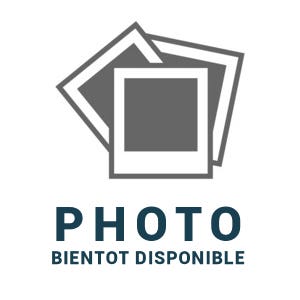Experiment: Determination of the heat capacity of water
Topics covered:
- Method of mixtures
- Joule's law
Principles and objectives:
Method of mixtures:
In the calorimeter, pour a volume V1 of water at room temperature. Note the mass of cold water (m1) and the
temperature of this water (T1).
In the calorimeter, quickly pour a volume V2 of hot water at about 50°C. Note the mass of hot water (m2) and the temperature
of this water (T2). Cover and shake. Note the equilibrium temperature (T3).
The law of conservation of energy indicates that the sum of the energies transferred by the cold water, the calorimeter, and
the hot water is zero.
Q1 + Qcal = 0 so m1.Cwater (T3-T1) + C(T3-T1) + m2.Cwater (T3-T2) = 0
With Cwater = 4180 J.K-1.kg-1
Joule's law:
This experiment allows quantifying the electrical energy supplied to heat a volume of water and to assess
the influence of the current flow time, the ohmic resistance.
A series circuit is set up comprising: 1 continuous voltage generator 6/12 V, 1 rheostat 33 Ω, 2.2 A, 1 joulemeter,
1 temperature sensor, the heating resistor to be submerged in the calorimeter.
In the calorimeter, pour a volume V1 of water at room temperature.
Note the mass of cold water (m1) and the temperature of this water (T1).
Trigger the acquisition and quickly adjust the intensity to the desired value.
Repeat the experiment for several current values, plot Q=f(i²) to obtain the same ∆T, we obtain a straight line which allows to conclude that the thermal energy is proportional to the square of the current.
Repeat the experiment by recording Q for several time values to verify that the thermal energy is proportional to time.
- Dewar Calorimeter (ref 253081) - Foxy Console (ref 485000) - Thermometer Sensor (ref 482101) - Initio 2 Joulemeter (ref 292087) - 12V 5A Power Supply (ref 281483) - Rheostat 33 (ref 281277) - A.S. Sup Software (ref 000131)





